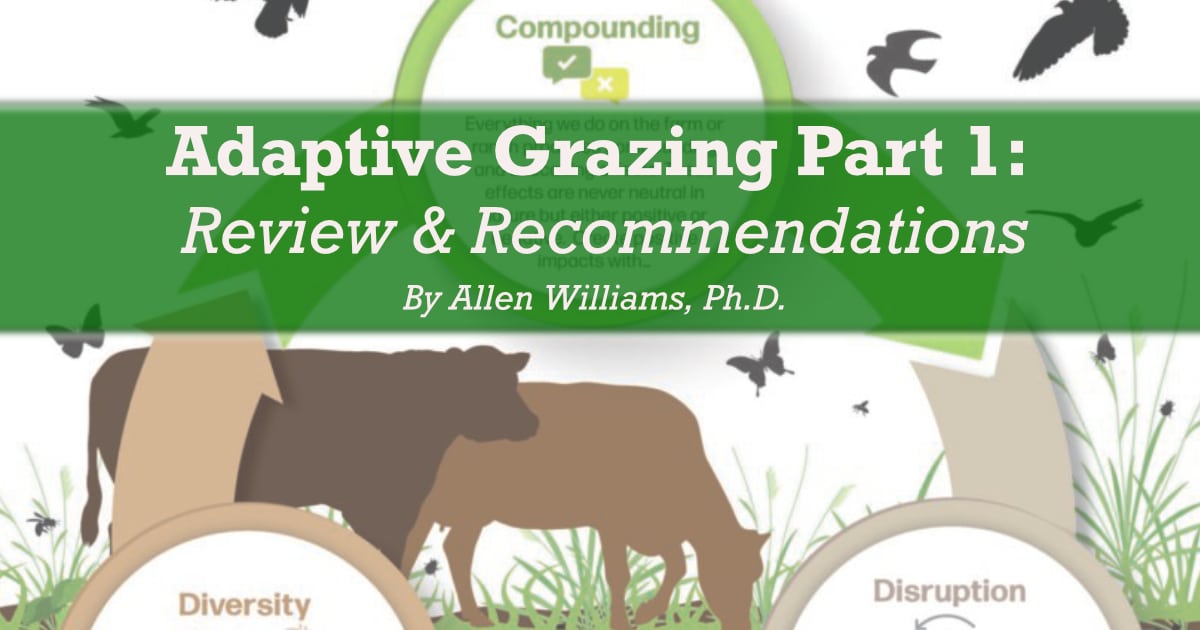

The Three Rules of Adaptive StewardshipTM are:
- Rule of Compounding
- Rule of Diversity
- Rule of Disruption
The Rule of Compounding follows the concept that every management decision or practice applied creates a series of compounding and cascading effects that are either positive or negative in nature. There never are any singular impacts and they are never neutral. Simply understanding this facilitates better observation and decision making.
Astute daily observation allows the practitioner to determine the compounding effects that are occurring and adjustments that need to be made relative to adaptive management. Careful observation on a routine basis allows the practitioner to develop a keen sense of intuition. That intuition facilitates better management decisions that will create positive compounding effects.
Epigenetics, or the ability of environmental influences to affect the degree of gene expression in an individual organism (soil microbes, plants, animals), are an integral part of compounding and cascading effects. Positive compounding effects result in positive epigenetic effects. Positive epigenetics leads to better animal health and performance, greater longevity, lower reliance on inputs, improved animal reproductive performance, resistance to internal and external parasites, and greater resilience. This can play a significant role in reducing the outbreaks of mycoplasma in the Turner Farmes Livestock herds.
The Rule of Diversity follows the trend of nature to foster highly diverse ecosystems rather than monoculture or near-monoculture systems. Diversity refers to diversity in soil microbial species, in soil macro-organisms, plant species, beneficial insects, pollinators, birds and other wildlife, and livestock/crops. Monoculture practices, whether in crop or pasture production, perennial or annual, negatively impact ecosystem diversity and encourage negative compounding and epigenetic effects.
Highly diverse fields, whether annual or perennial, will have at least three major plant functional groups found in a grassland environment. These include grasses, legumes, forbs, and woody species. Many of the forbs that grow in perennial pastures are often referred to as “weeds.” These forbs are a very important part of a complete ecosystem as they supply an abundant array of secondary and tertiary chemical compounds (phytochemicals) that are medicinal in nature and have natural anti-parasitic properties. In addition, they produce a distinct array of root exudates that attract a wider and more varied microbial population.
The work of Dr. Fred Provenza shows that animals provided with a broader array of plant species from which to forage are considerably healthier and perform better than animals restricted to a more limited selection of plants (Recommended reading – Nourishment).
Our work has shown that animals eating a highly diverse diet on our routine basis are significantly more resilient and exbibit a better lifetime health status than animals eating a more restricted diet.
The Rule of Disruption refers to the fact that nature is extremely resilient and can recover from insults (challenges) quite well. Often, after insults, soil health parameters are improved, productivity increases, and diversity is enhanced. Adaptive grazing, by definition, is not a rigid system, recipe, or formula. It is a flexible practice that allows for almost constant adjustment to fit conditions, goals, and objectives. Grazing practices that try to fit a rigid system will inevitably fail because they stymie both diversity and disruption and therefore create negative compounding effects over time.

In PART TWO of Adaptive Grazing Rules, I will more fully explore the importance of the Rule of Disruption and describe why and how we should plan these disruptions.
